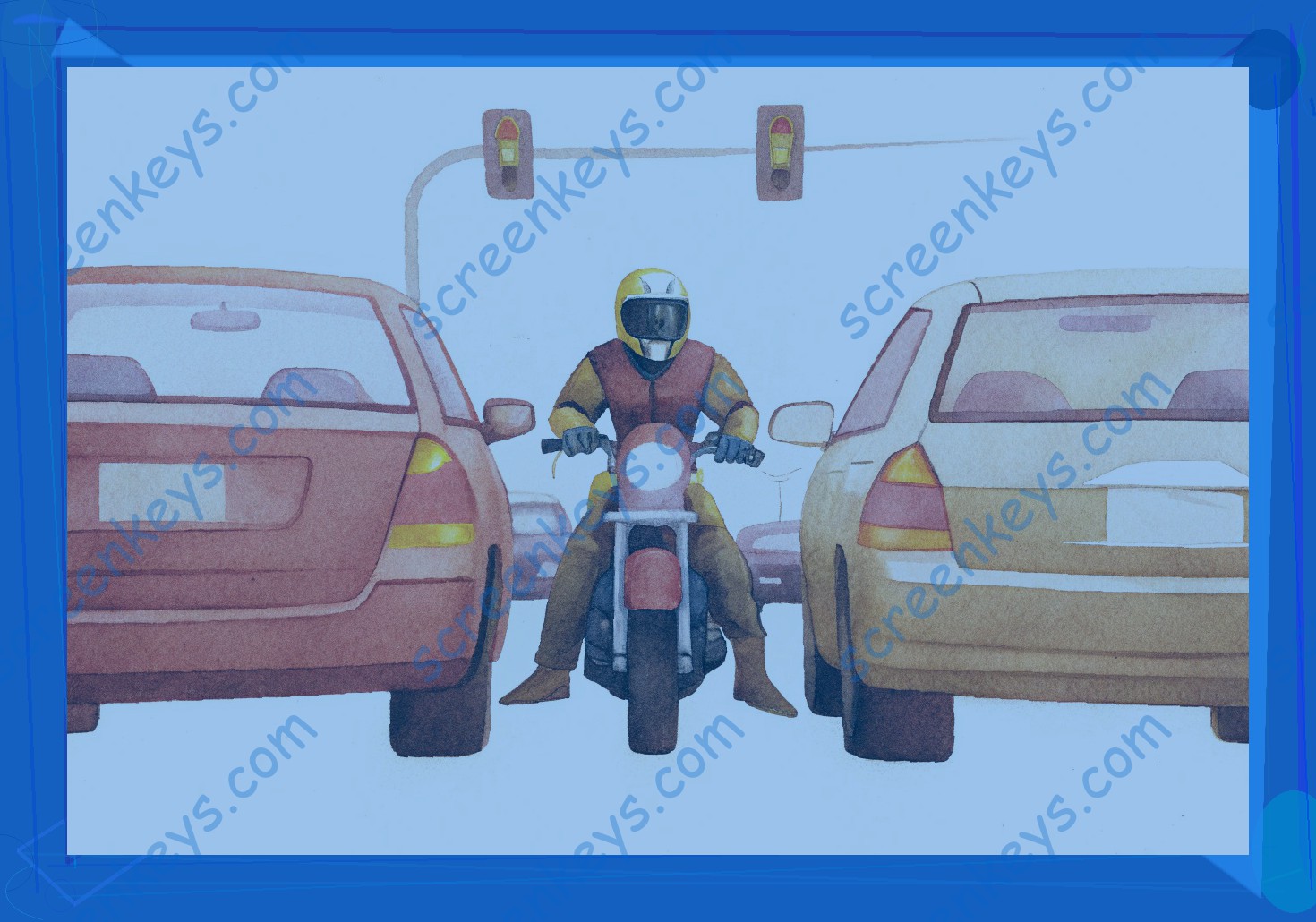Understanding Lane Splitting
When discussing Pennsylvania motorcycle laws, one topic that frequently comes up is the rules of the road for motorcyclists on busy streets. One of the most common questions that comes up for riders is about an action known as "lane splitting." If you’re wondering, "What does lane splitting mean in the context of motorcycling?" then we’ve got you covered.
Lane splitting is a maneuver where the motorcyclist weaves in and around traffic by driving in between lanes. The maneuver is typically performed in slow-moving, congested traffic or when a temporary stop is in effect – such as a traffic light. In these circumstances, lane splitting allows riders to make forward progress instead of remaining stuck like the rest of the vehicles. Though the term is not always used, "filtering" is another lane splitting technique that typically applies to the act of driving to the front of traffic at a light.
There are several potential benefits and risks to lane splitting. The immediate benefit for riders is that they can quickly make progress through a stretch that is otherwise slow . The maneuver can keep riders well ahead of traffic, making for a safer commute. Lane splitting can also keep riders safer by preventing them from spending too much time sandwiched between two larger vehicles.
One of the biggest risks with lane splitting is that drivers of surrounding vehicles have been known to react poorly. During times of reduced visibility, the sudden movement of a motorcyclist between cars can startle drivers. These negative reactions include hitting the throttle too quickly, edge creeping (when motorists move out of their lanes), or doing anything else that could result in a collision. The combination of fast speeds and heavy traffic creates a greater risk for riders who decide to split the lane, which is why those who decide to do so must have excellent spatial awareness.
Riders should check their local laws regarding lane splitting. Not every state considers lane splitting legal. Even if a rider decides to lane split in Pennsylvania, he or she should always consult an attorney if an accident occurs while lane splitting.

Is Lane Splitting Legal in Pennsylvania?
For all of the advocacy and grassroots efforts that surround the issue statewide, there has yet to be any bill introduced or otherwise circulated in the legislature proposing a lane splitting regime. There is no current law regulating lane splitting in Pennsylvania, and it remains illegal under current traffic regulations. Pennsylvania law does define "lane splitting" in the context of motor vehicles and motorcycles as "[s]imultaneous operation of a motorcycle and more than one motor vehicle in the same lane of traffic," although that definition is unique to a specific rule about motorist and motorcyclist awareness. 75 Pa. C.S. § 3322.1 (e). Other than that narrow application, there is currently no law in Pennsylvania governing lane splitting, penalizing it, or providing an exception to it. Lane splitting remains illegal statewide and any such conduct could subject a rider to a fine or other citation by law enforcement, and would not support claims for liability against an at-fault motorist for collision injuries.
Comparison with Other States’ Lane Splitting Laws
There are a handful of states that have legalized lane splitting, a practice which allows motorcyclists to pass slow-moving or stopped vehicles by riding between them in the same lane. Additionally, a few states have passed legislation that expressly prohibits lane splitting and provides for fines if the law is broken. Pennsylvania falls into the latter category. As discussed above, California is the only state that has expressly legalized motorcycle lane splitting. Carpool and HOV lane exemptions have been granted for motorcyclists in states such as Maryland, Minnesota and Texas. However, these states have not yet expressly legalized lane splitting statewide. Other states have taken the position that no legislation exists with respect to lane splitting and therefore courts may not impose stringent bans. For instance, courts in Washington and New Jersey have referenced the lack of legal prohibition in those respective states to permit lane splitting when necessary to avoid collisions. The application of this rationale remains to be seen as the aforementioned cases involved unique facts. Finally, a few states have opted to explicitly prohibit lane skipping and tightly regulate the movement of motorcycles. Full lane changes are prohibited in Florida, Georgia, North Carolina and Ohio, while New Hampshire permits only motorcycles over 59 inches tall to split lanes. Lane splitting typically is discouraged if traffic is moving at high speeds (above 20 mph), but these rules represent the most significant restrictions in the nation.
Safety Concerns for Motorcyclists
Regardless of lane-splitting being legal (or not), there are safety measures that motorcyclists should take into consideration if they choose to lane split. Obviously, the most important factor (repeated from above, perhaps ad nauseam) is that lane splitting creates a disturbance in the normal flow of traffic and is extremely dangerous for anyone involved. For that reason, you should opt to avoid lane splitting whenever possible.
But, if you must or choose to lane split, there are things you can do to increase your safety and decrease your risk of a crash. First and foremost, always wear a full-face helmet, gloves, padded jacket, and elbow pads. Second, be exceedingly cautious in selecting the division in which you wish to travel. For example, cars in the left lane have superior visibility and control when compared to motorcyclists in the left lane. Furthermore, leaving more space (about four to five feet) between yourself and the vehicle in front of you will create more space in which to move and maneuver should you find yourself needing to avoid a collision.
Always be aware of pedestrians. They often walk very close to the road and are commonly unpredictable in slicing across roads and lanes. This is particularly dangerous for motorcyclists who are in the midst of a lane change/manoeuvre. Be aware of the difference in size/dimension between your motorcycle and the motorcycle in front of you. Allow yourself a good margin of space and never travel faster than the flow of traffic. Be extra attentive to all traffic signals and stop signs, as well as all lanes of traffic. Pay particular attention to vehicles that might be changing lanes without signalling and vehicles that change lanes without first observing whether or not a lane is actually free.
Opinions and Controversies About Lane Splitting
Even though lane splitting is illegal, far more than a few reckless riders practice the lane splitting technique any way. Surveys of motorcyclists show that nearly 85% of them approve of lane splitting. Most of these surveys also show that motorcyclists will lane split more frequently if laws permitting it are passed. In addition to feeling that lane splitting improves rider safety, many motorcyclists feel that lane splitting is simply safer than stationary traffic. Although technically this is speeding, most motorcyclists feel that lane splitting is legal in the same sense that passing on the right, passing on the left, crossing the fog line, and disobeying other traffic rules are also legal in the same sense as speeding; it is done all the time. Safety experts often oppose laws permitting lane splitting. They state that lane splitting is truly just speeding instead of a form of safe traffic management, which will lead to more speed convictions and more car and motorcycle accidents. Still, there are safety experts who support the practice, claiming that passing lanes at red lights, highways and busy two lane roads where passing is impossible will decrease accidents and save lives. The Insurance Information Institute (III) also supports lane splitting laws. The III noted that the majority of car accidents are because the car drivers did not see the motorcycle . They state that allowing motorists to view the motorcycle will aid in motorist safety. Also, cars will move past quicker in heavy traffic if motorcycles are allowed to move between lanes. Although economic arguments against passing laws permitting lane splitting have been introduced, they have often failed to gain traction when compared to the general economic benefits. The Motorcycle Safety Foundation (MSF) has been instrumental in bringing the benefits of lane splitting to the public’s attention as well. The MSF has stated how lane splitting will provide greater safety, less congestion, and allow better traffic flow. In addition, they note that lane splitting is already practiced by truck drivers, taxi operators and law enforcement with very little admonition. However, the state DOTs have experienced some push back from several groups against any legislation allowing lane splitting. Most of the pushback comes from officials representing the trucking associations and law enforcement as well as some of the public at large. Their arguments are centered mostly around potential negative environmental impact, law enforcement resource requirements to enforce new laws, possible additional liability insurance costs, clear implications for liability insurers and negligence statutes, lack of knowledge by law enforcement officers on lane splitting laws, and large motorcycle owner disapproval.
Potential Changes and Future Legislation
As public discourse continues about motorcycle lane splitting, so too will the matter of legislative changes to the law regarding the practice in Pennsylvania. It would seem that the best weapons for changing existing policies would be ardent supporters of the practice, except that it may not be enough to simply have supporters try to raise awareness. To really succeed in getting lane splitting approved in Pennsylvania, there needs to be people on the inside that can move the effort forward through the legislature. Legislation introducing "pro lane splitting" bills has been presented in the Pennsylvania House of Representatives in the past. However, it has not gained enough political traction to create widespread awareness or debate. Further, such efforts are almost always quickly met with the opposition of motorist advocacy groups who view lane splitting in a negative light. Under the current law in Pennsylvania, motorcyclists are not permitted to weave through lanes of slower moving or halted traffic and do so at risk for a significant fine and like penalties for violating the lane splitting prohibition. Whether the existing prohibition on motorcycle lane splitting is eventually modified, or even repealed, is uncertain. There remains a fair chance that lane splitting will never be successfully brought into the realm of motor vehicle operation as it exists in other states. However, if something does happen in the future with respect to this area of the law, it seems inevitable that the change will occur gradually over time, and likely in increments. At the moment, nobody knows exactly how or when such a change would happen because it is difficult to make specific predictions about legislative trends. For now, the best that can be done is to pay attention to developments and stay current with any changing aspects related to the operation of motorcycles in Pennsylvania.
Conclusion: What Should a Rider Do Now
To say the motorcycle community is divided on this issue is an understatement. There are strong opinions on both sides of the argument for and against lane splitting in Pennsylvania. Regardless, unless there is a significant change to Pennsylvania’s laws (which appears unlikely), our recommendation to motorcycle riders in Pennsylvania is to avoid lane splitting. Even if PA law is silent on the issue, it is clear that many people – including law enforcement and judges – view the conduct as negligent. As a result, even if you were to successfully navigate the criminal arena , you may find yourself in the civil arena facing significant liability. We have certainly seen this and we continue to see this in other jurisdictions like California, where the courts have concluded that lane splitting is a negligent driving practice with no safe harbors. As always, we recommend that riders make good choices. Lane splitting is fraught with danger. A defensive driving mindset is a necessary addition to a motorcyclist’s mental toolbox. Being aware of one’s surroundings and planning accordingly can make all the difference in a busy traffic situation.



